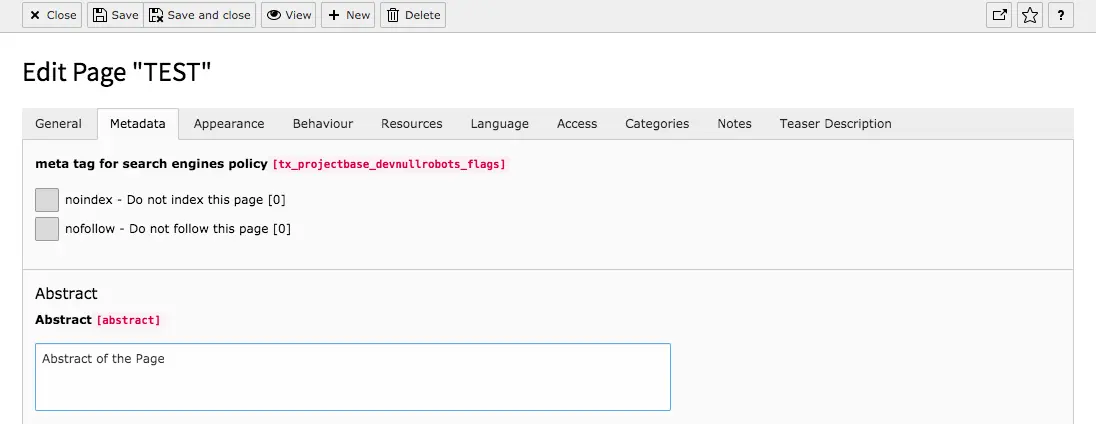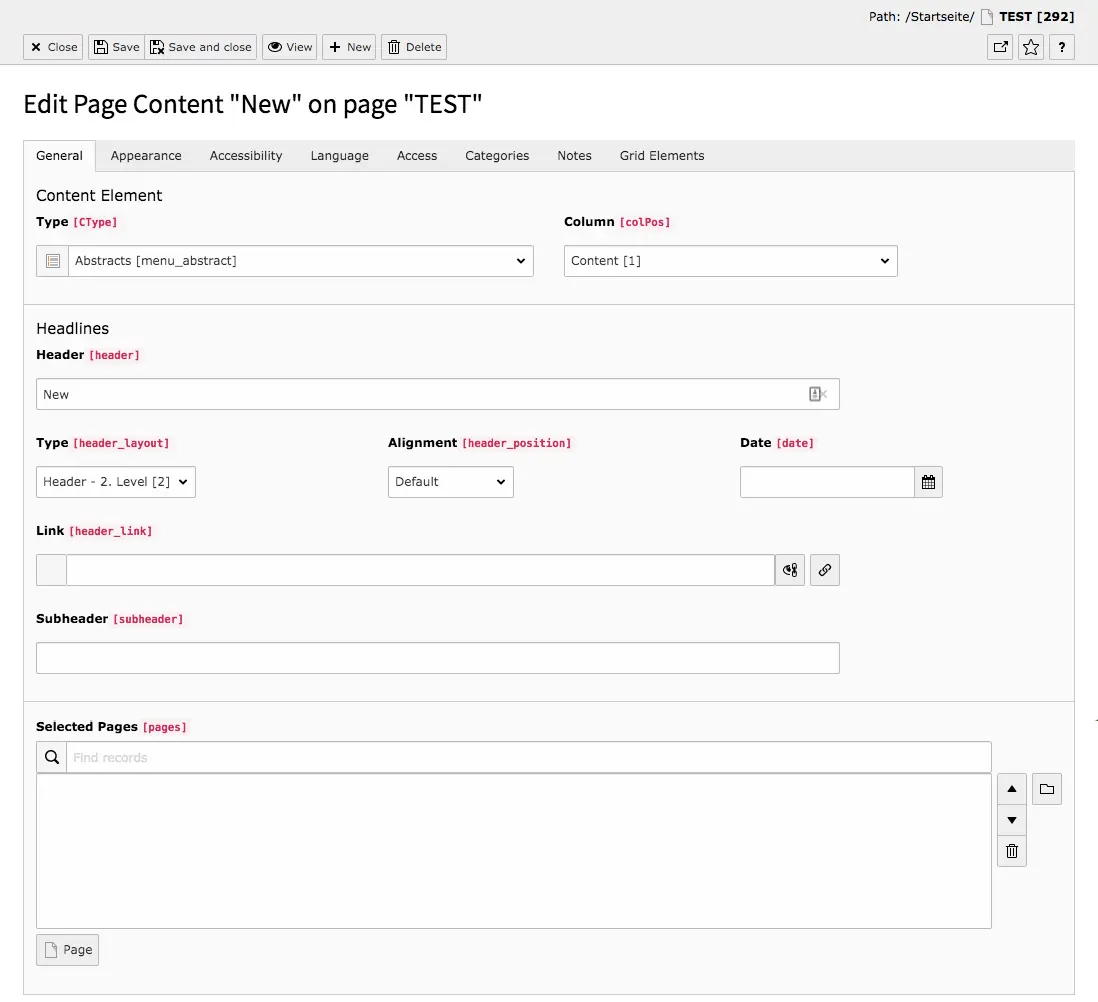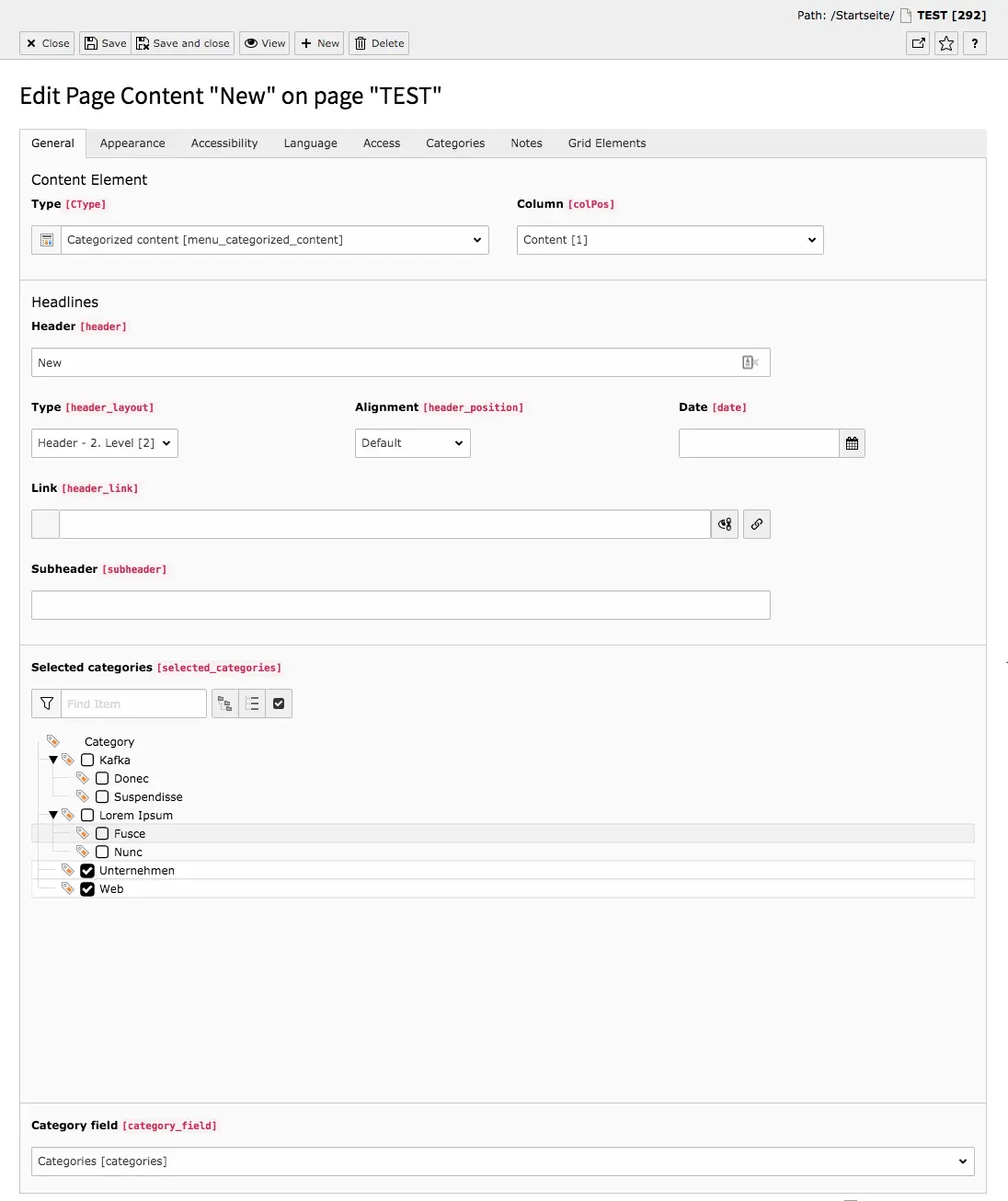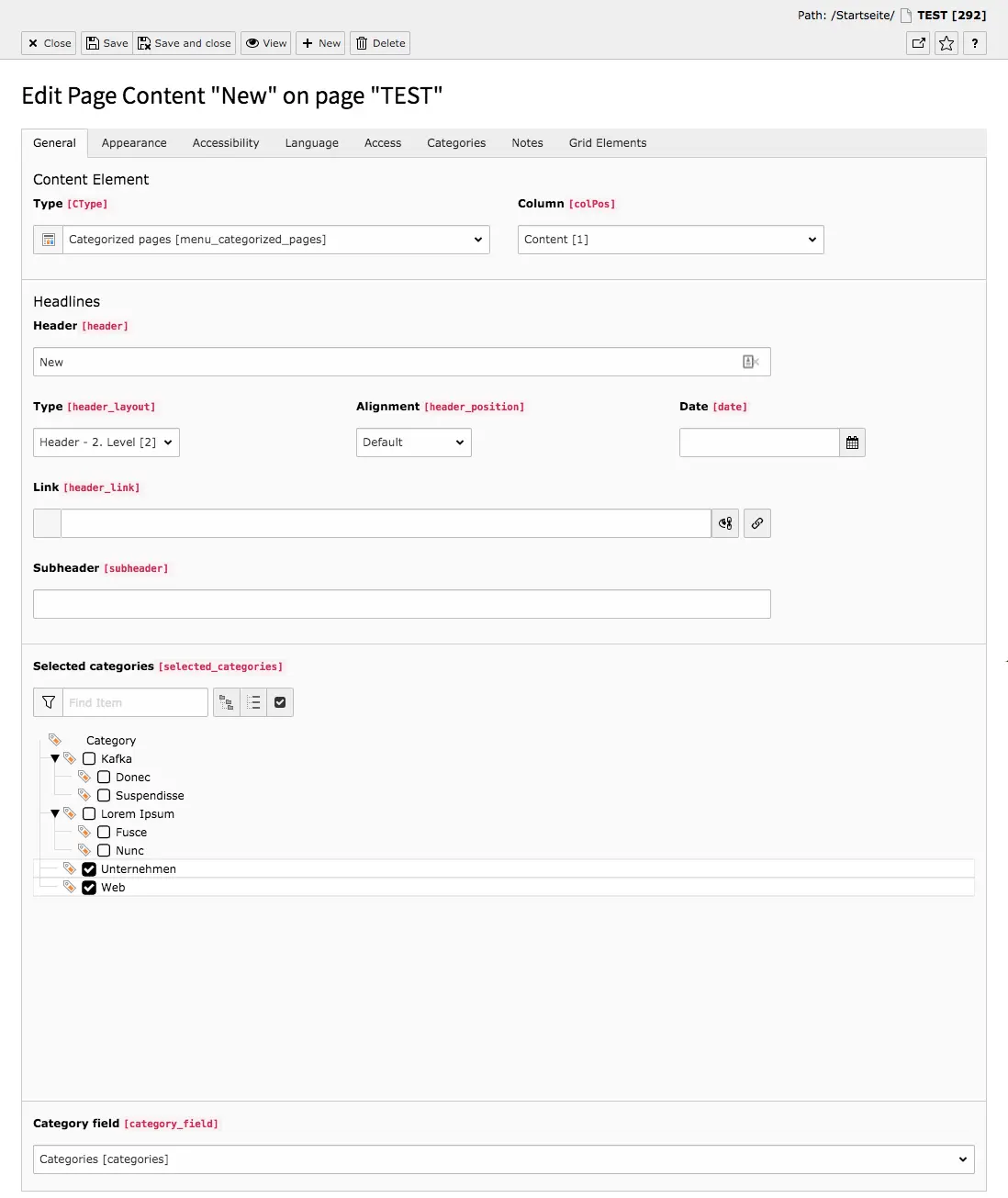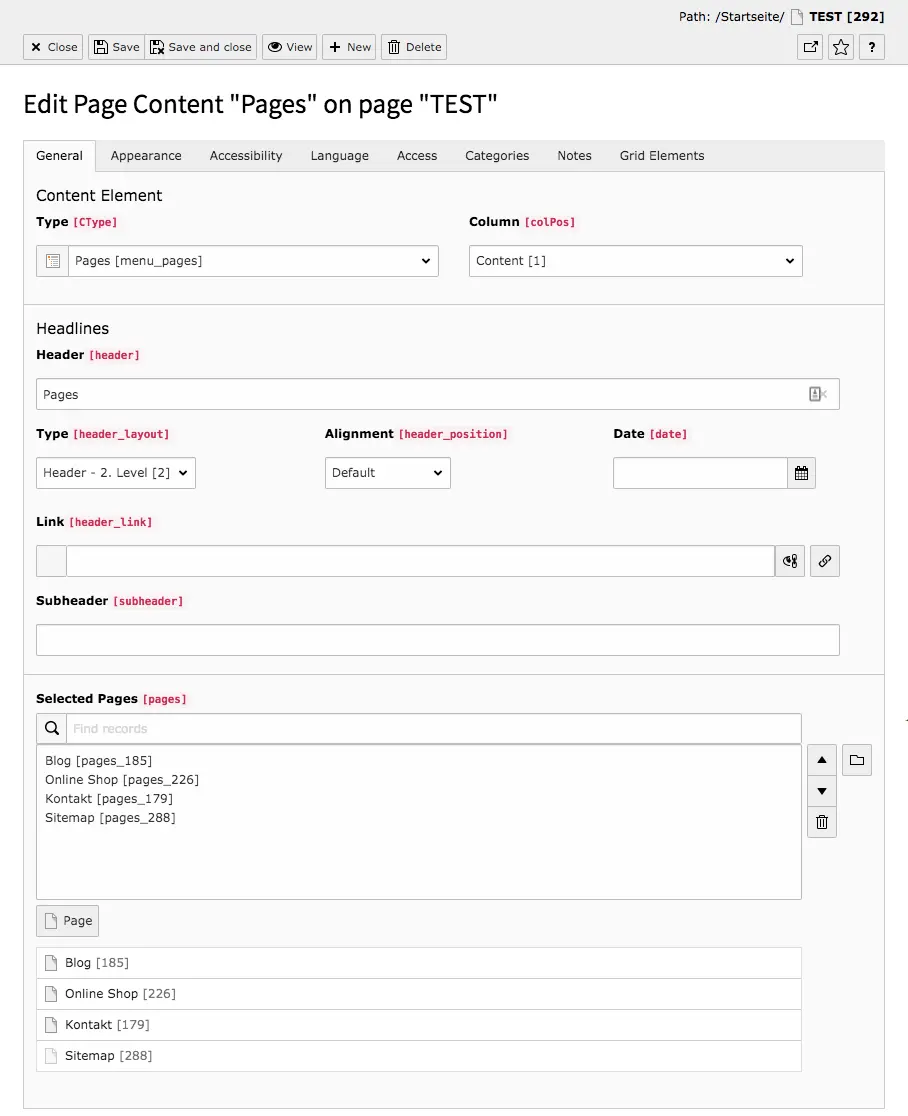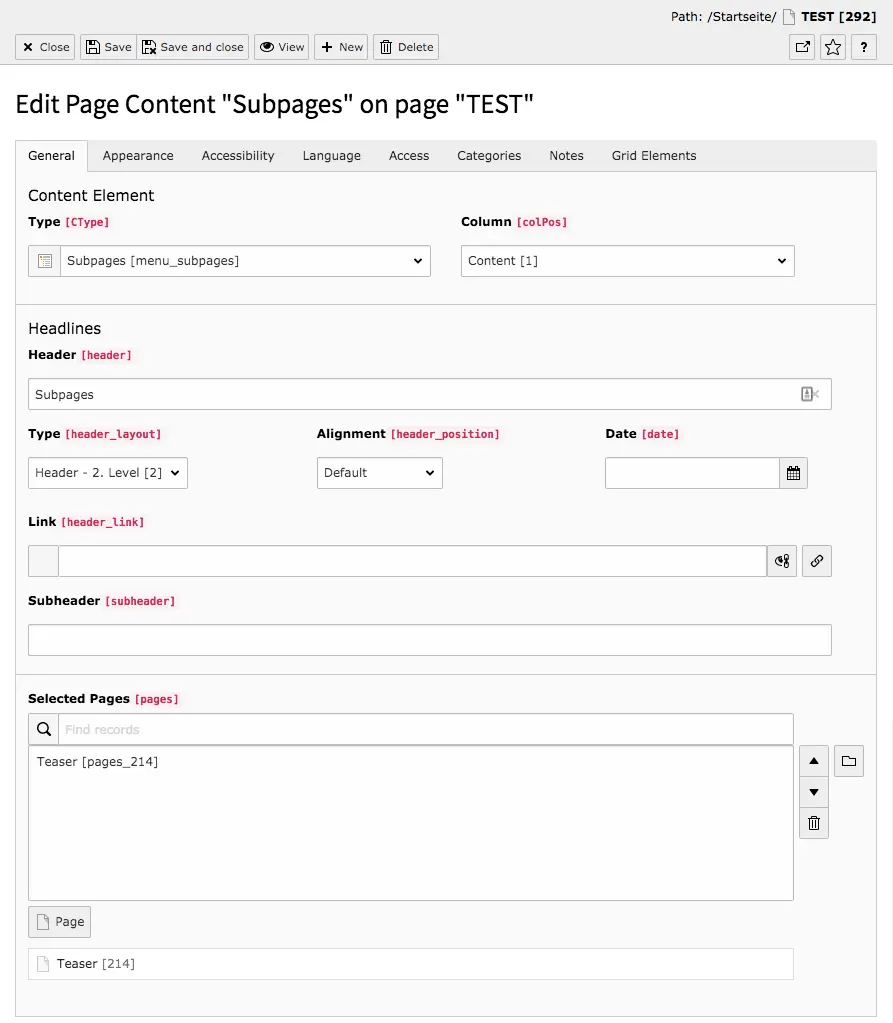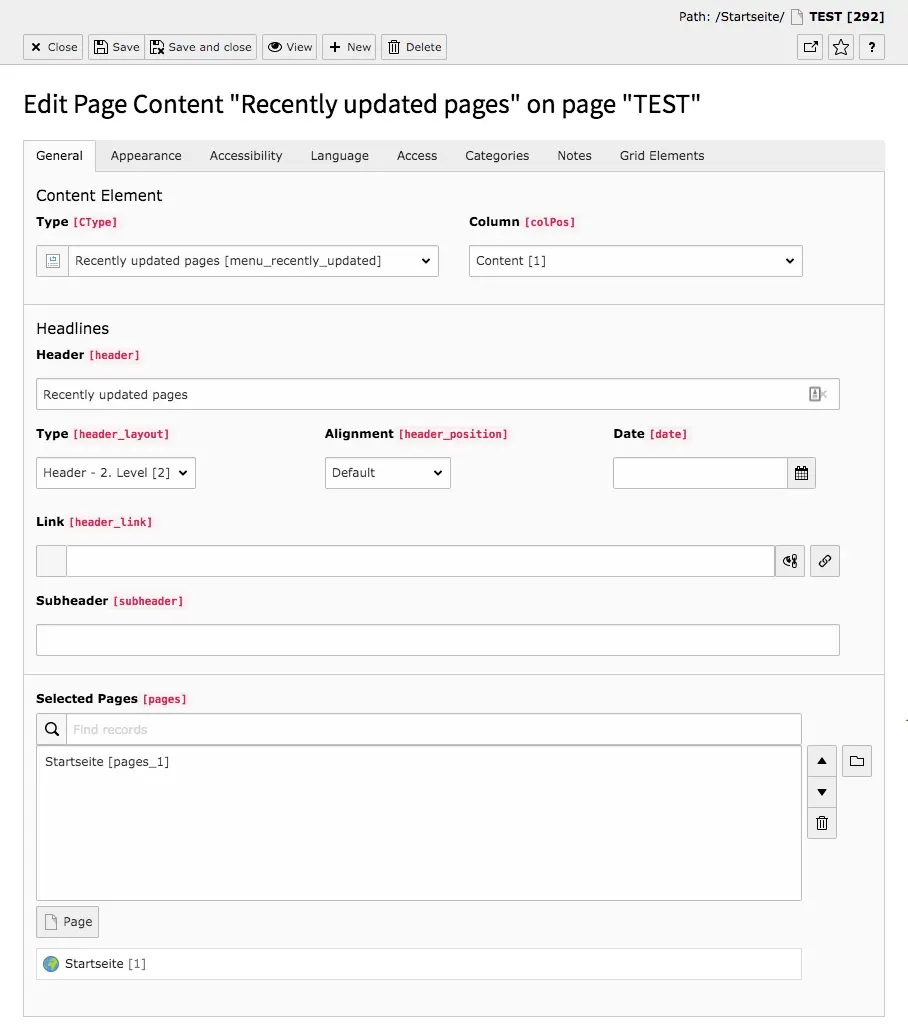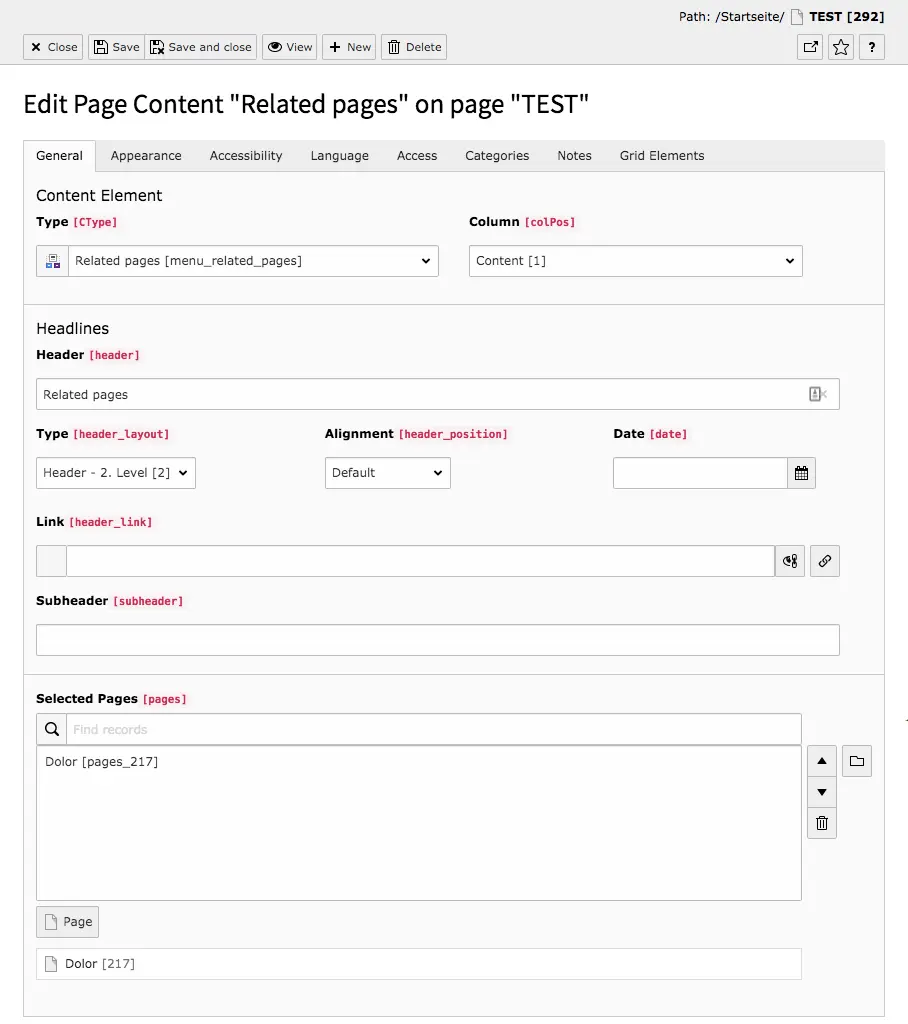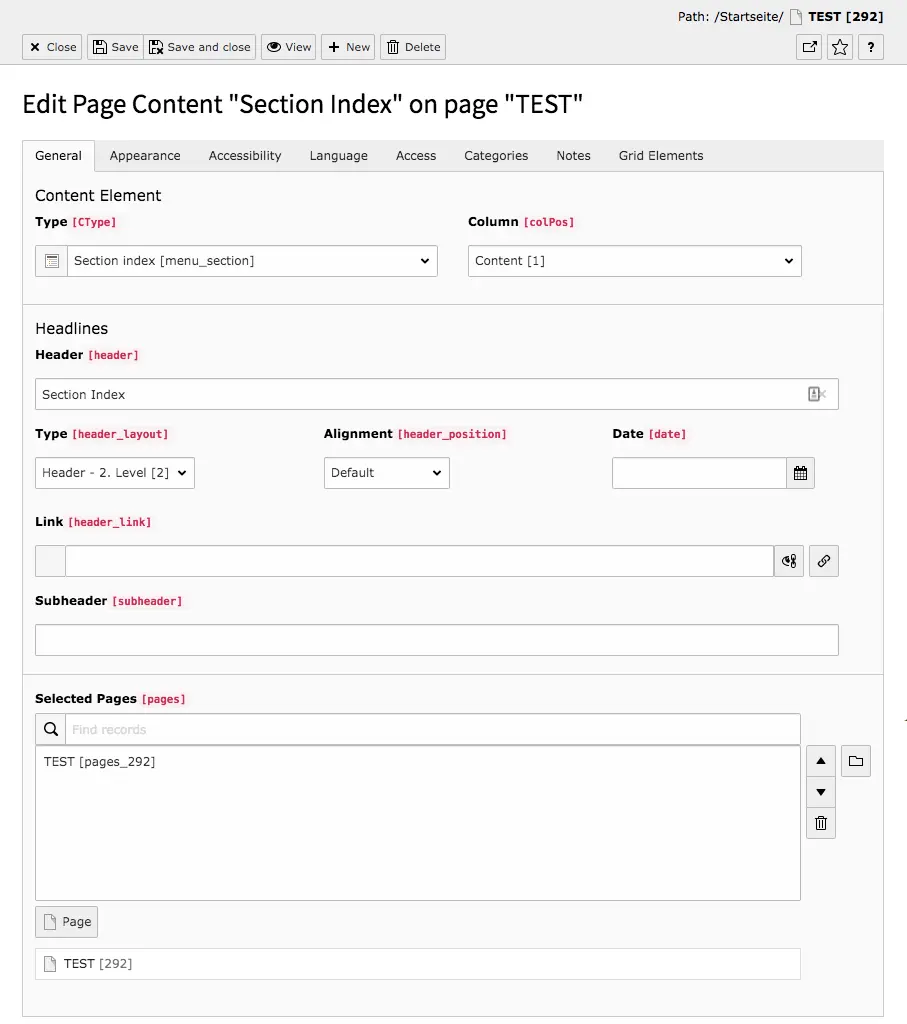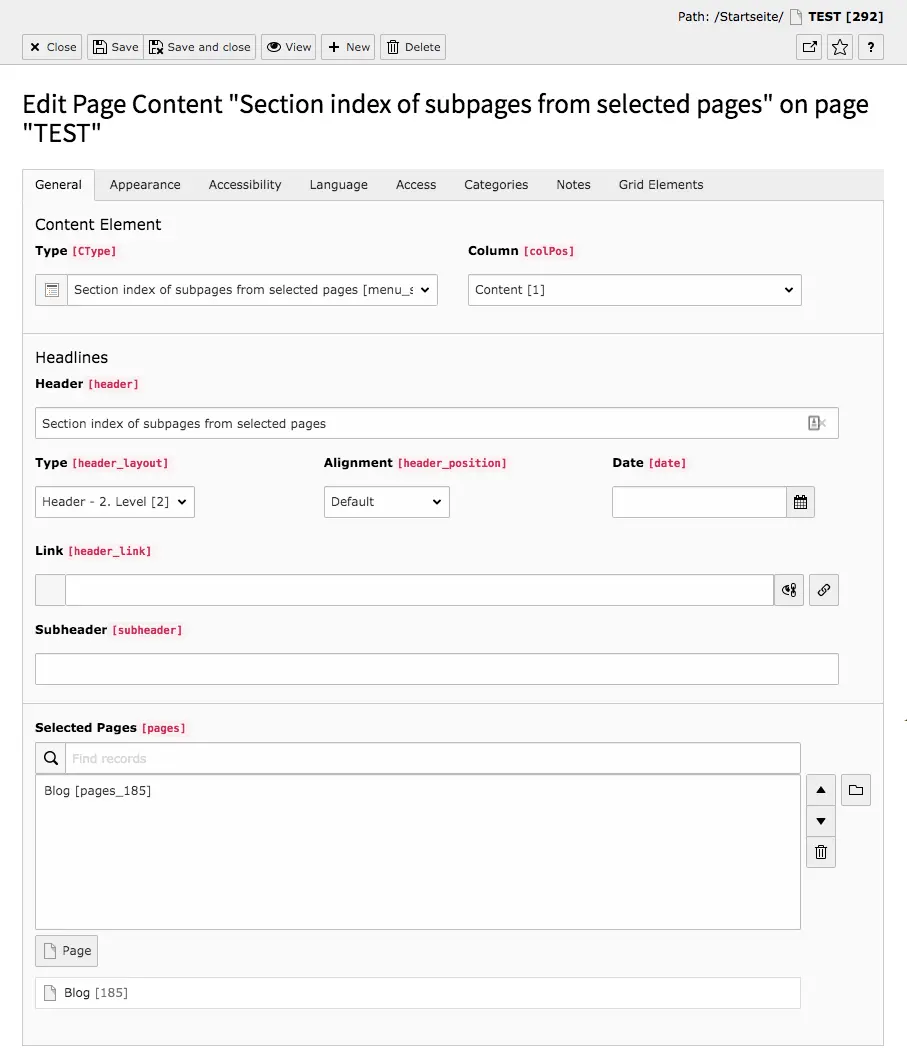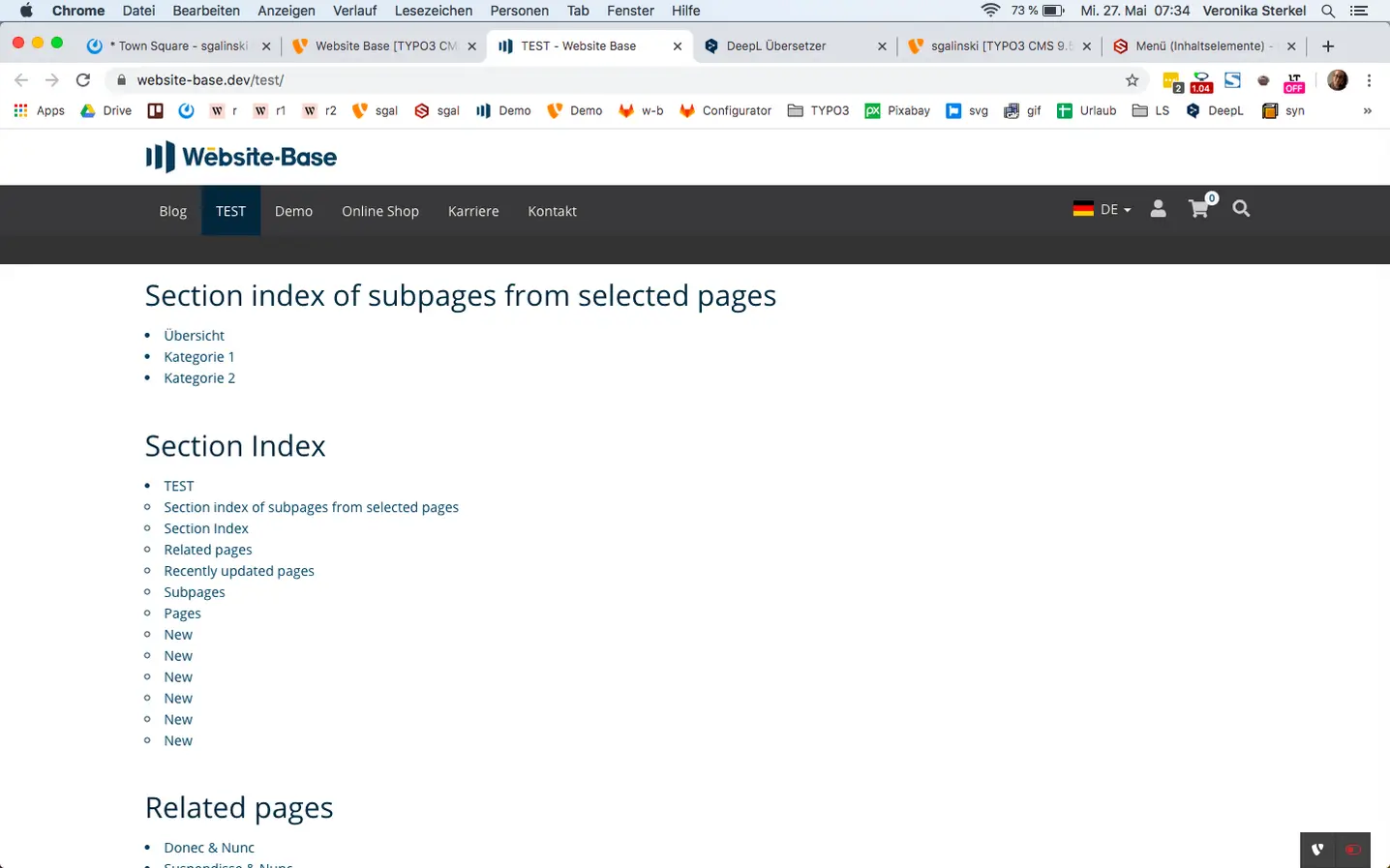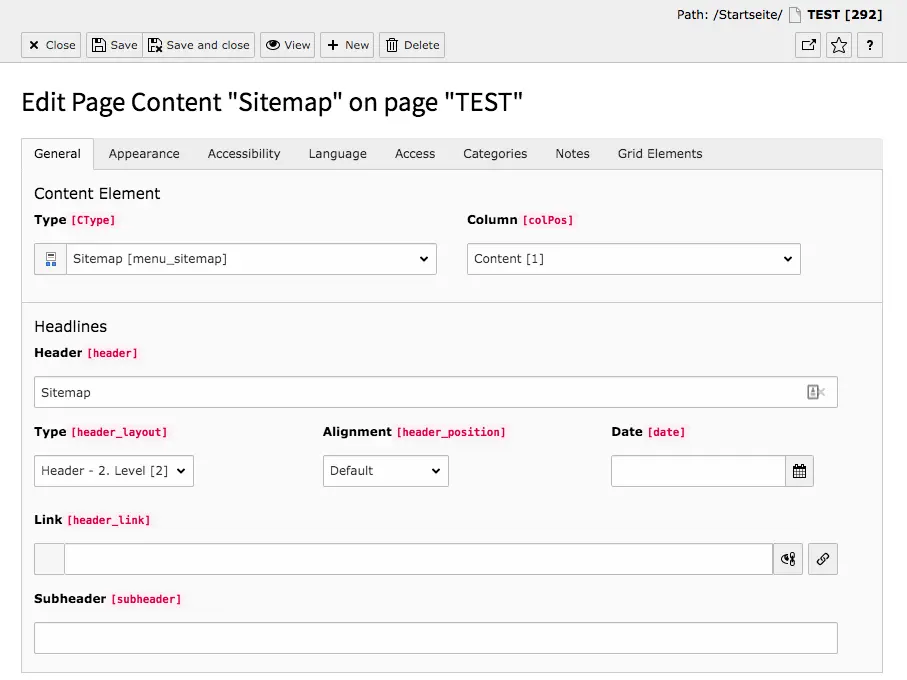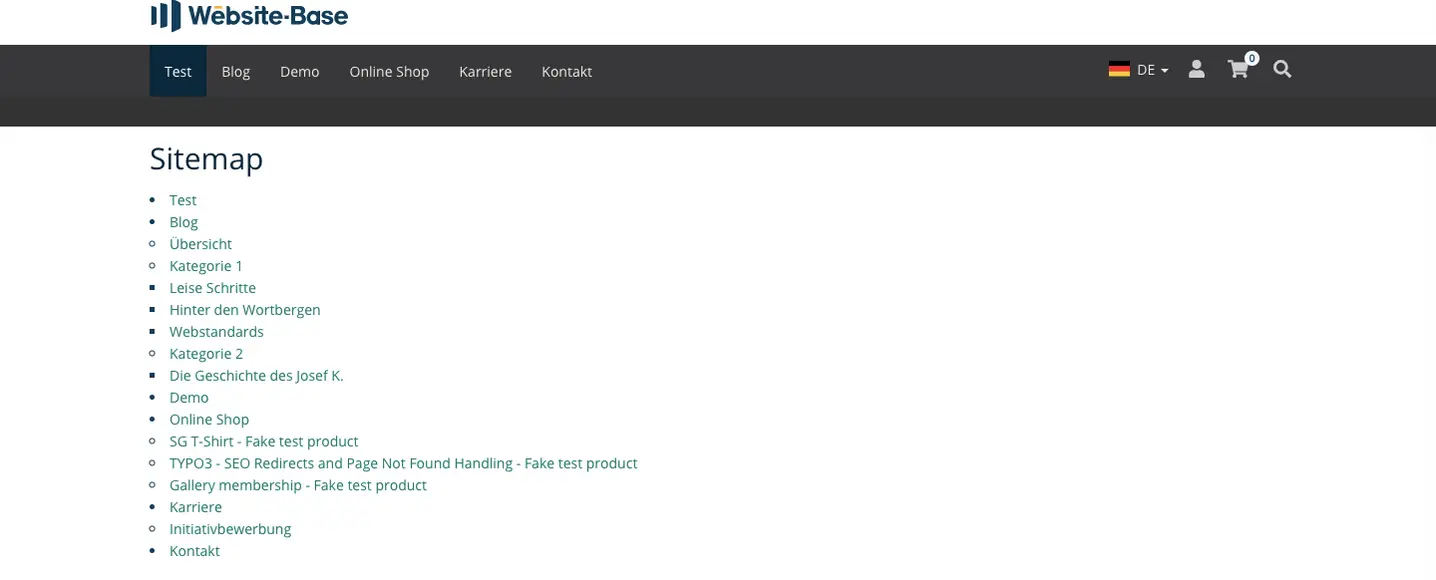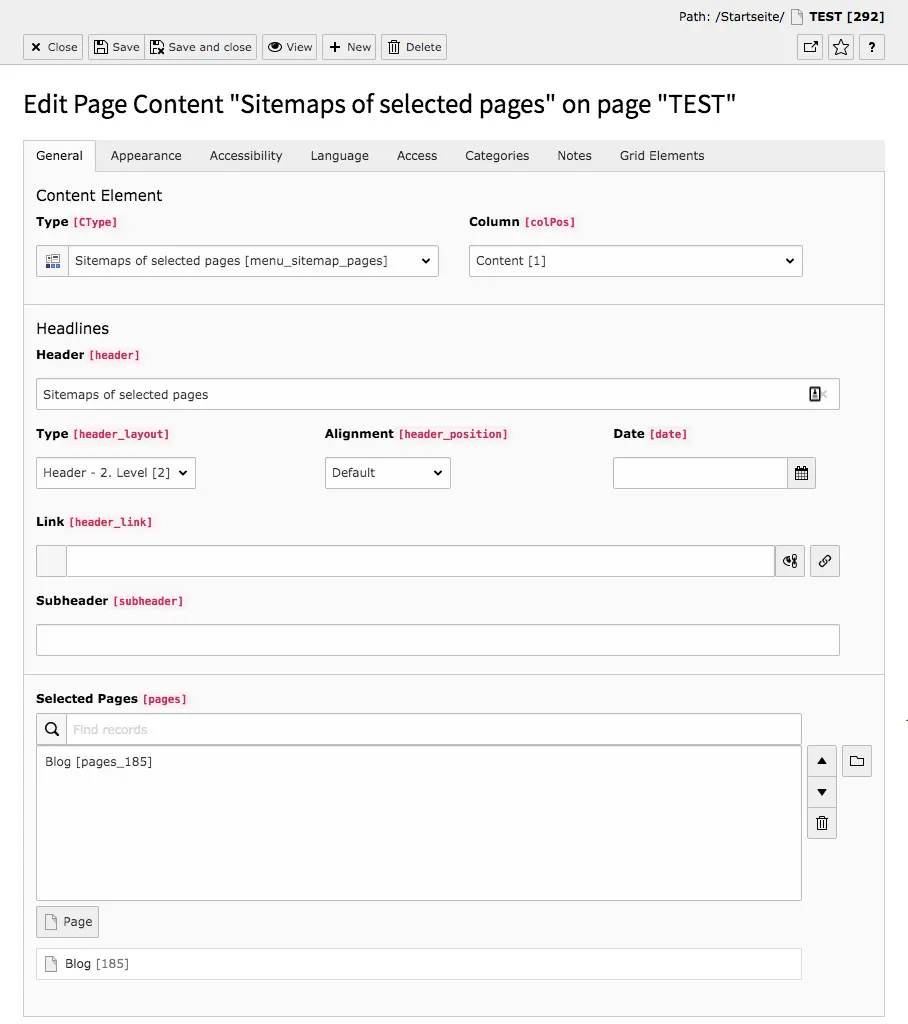Zusammenfassungen

With the content element Abstracts you create a menu of the subpages of a selected page. For each subpage that has a table of contents, this is displayed as a summary. This TYPO3 content element can be used to create a page with a small number of subpages.
Tab General
Headlines
If you need a header, enter it in the field provided, as you know it from the content element Header only.
Selected pages
Click the Page button or the folder icon to the right of the field. Select a page that contains subpages. In the page properties of each page you will find a field for a table of contents in the Metadata tab. This text is displayed as a summary.
